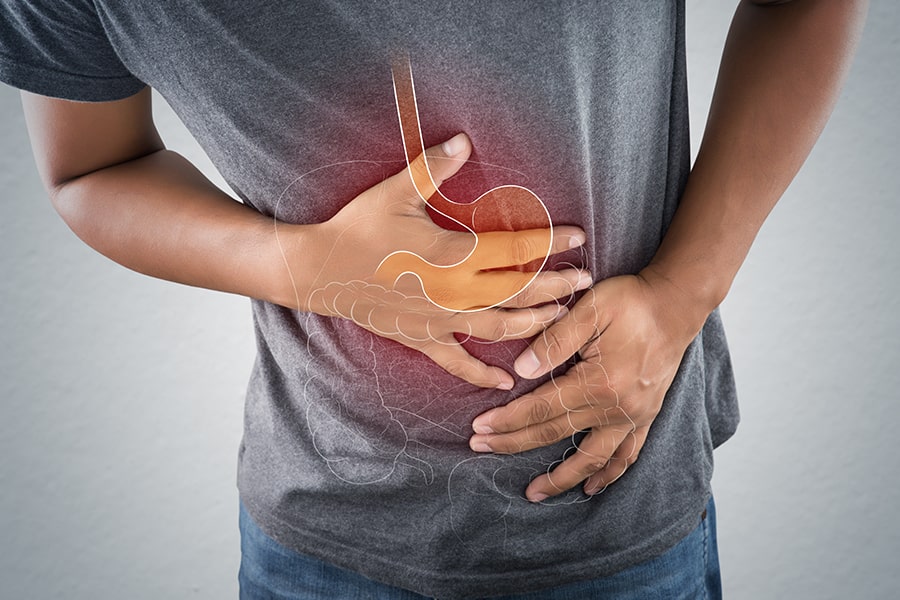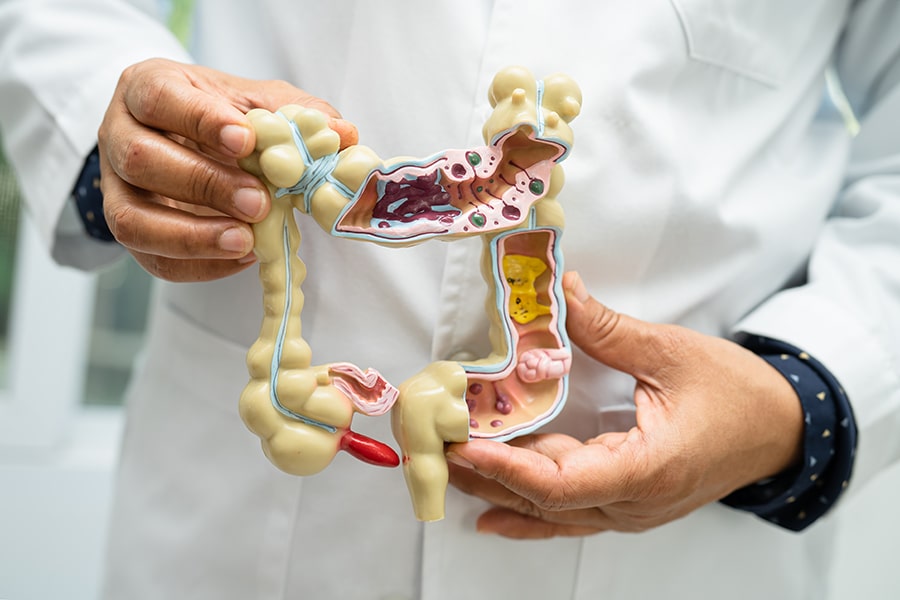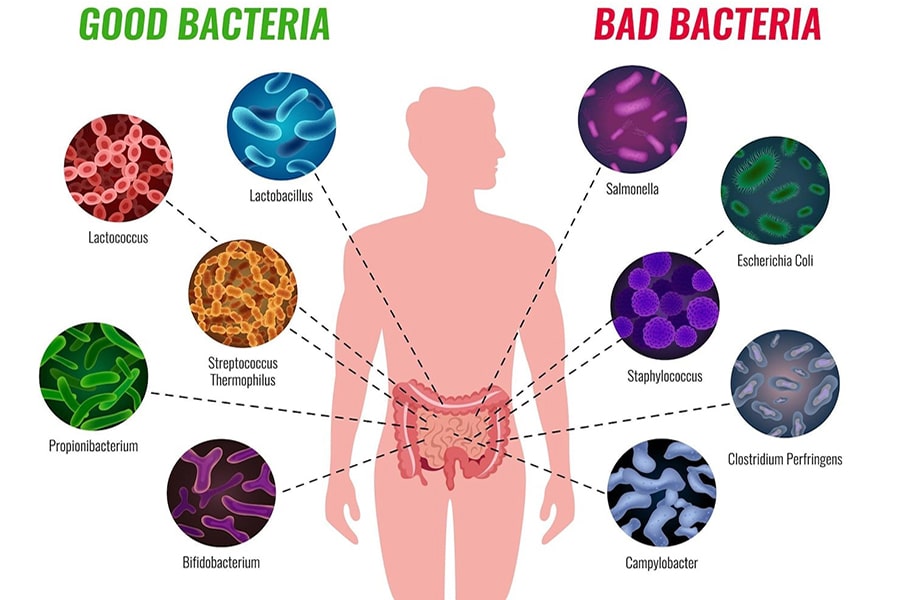Probiotic Journey in the GI tract
To start their journey through the digestive tract, probiotic bacteria need to be able to survive in the stomach environment. Even robust strains find this to be a challenge. So, to give them the best chance of survival, probiotic supplements are best taken in the morning when stomach acids amounts are at their lowest. Probiotics can be taken with, or just after, breakfast.

Stomach Acid
We now can see that timing is a key factor to ensure the survival of probiotics through the harsh stomach environment. By taking a probiotic supplement in the morning with breakfast you can ensure that the bacteria travel safely through the acidic stomach environment and arrive at their destination in the gut.
It is also important to select robust strains of bacteria that are naturally resilient to acidic conditions and have been tested to ensure their viability at different acidic levels. However, it has been found that probiotic bacteria prefer a slightly acidic or pH neutral environment.
Small and Large Intestines
Once through the stomach, the probiotic bacteria embark on the next stage of their journey. They are released into the small intestines, where some strains will begin to take up ‘residence’ for a short time. Other strains may pass through the small intestine and take up ‘residence’ when they reach the large intestine (or bowel). Where probiotics choose to reside is governed predominantly by the specific conditions in different areas of the gut including oxygen levels, pH (levels of acidity or alkalinity), and the type of bacteria in the microbiome.
Some areas of the gut have more oxygen available like the small intestine, whereas others have little or no oxygen, like parts of the large intestine. This part of the gastrointestinal tract is only suitable for certain strains of bacteria that do not need oxygen to survive.
In addition to oxygen levels, the pH differs at different points along the digestive tract. The small intestines typically are more acidic than the large intestine. Although, as we have learned, it can be a challenge for probiotic bacteria to travel through the highly acidic stomach, which can reach acidity levels of around pH 1.5, probiotic bacteria prefer a slightly acidic or pH neutral environment. All these factors influence where particular strains of bacteria choose to ‘live’.
All these conditions are taken into consideration when choosing the ideal probiotic for you.


Assessment of Probiotics Traversing the Stomach
To assess if a probiotic strain can reach the gut alive, specific laboratory tests are undertaken to detect the presence of the probiotic strain in the individual’s stool after supplementation. It is important to choose a probiotic supplement which contains strains that have been proven to reach the gut alive. It is commonly believed that probiotics need to be taken in enteric-coated capsules to protect the probiotics as they pass through the stomach before being released into the gut. This is not necessary for probiotic strains which are resilient and able to reach the gut without damage. When these probiotics can reach their destination, they can reduce the number of pathogenic (bad) bacteria, thus improving digestion and well-being.

